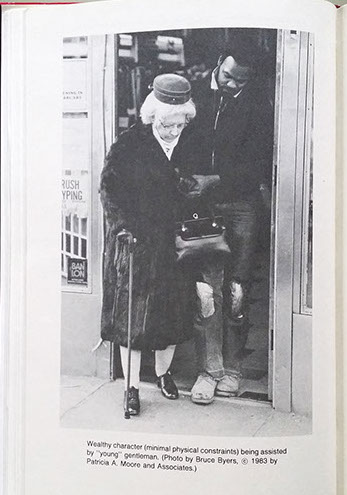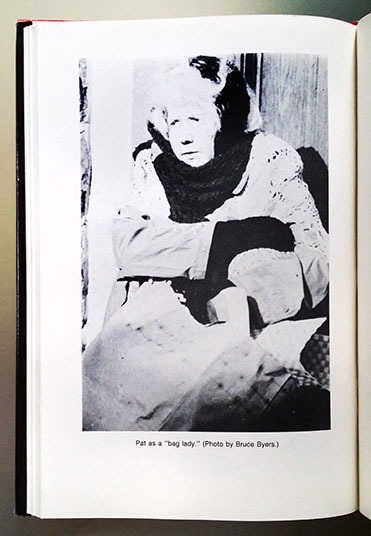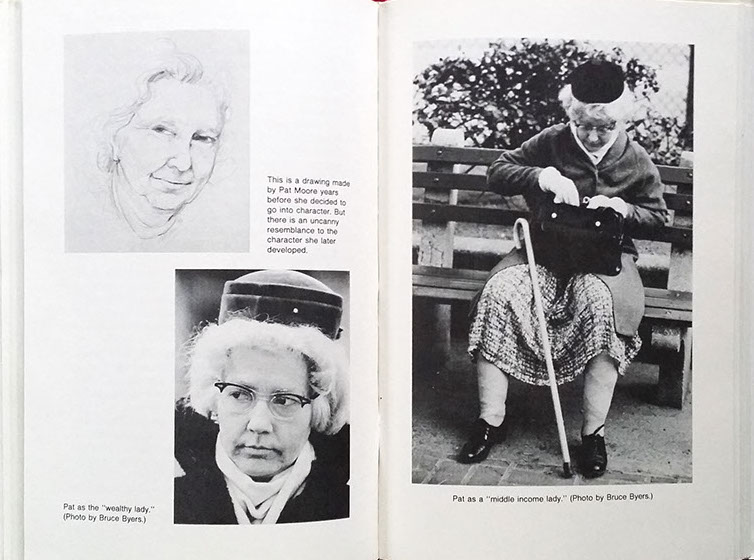By Chloe Hill
The word “empathy” is rarely associated with business and the marketplace. However, it is an important component of making a good, enduring product.
To follow this empathetic approach, companies and designers must put themselves in their customer’s shoes or, address a customer’s need that isn’t being addressed elsewhere. Empathy leads to investigation and the more the unique situation is examined and explored the better the solution to the problem. This requires care, patience, devotion and the questioning of assumptions.
The work of industrial designer Patricia Moore is a striking example of this empathetic approach. When working for the Loewy Design Firm in the 1970s, she began to question why everyday products were not designed with the needs of the elderly in mind. (At the time, Moore was only in her mid-twenties.) A close relationship with her grandfather throughout her life informed her inquiry.
In order to further understand the needs of the elderly population, she embarked on a journey that few designers since or after are willing to devote themselves to.
She literally put herself in her customer’s shoes.
With the help of a make-up artist friend she disguised herself as an old woman in order to experience the everyday problems that the elderly encounter.
Her costume included the obvious wig and a change in wardrobe in addition to more extensive modifications to mimic being hard of hearing, visually impaired, arthritic, and afflicted with osteoporosis.
For the next three years, Patricia Moore walked the streets of New York City and lived her life as an 80 year old woman — taking careful note of her experiences along the way. (She did this all while working part time at a design firm and pursuing graduate studies in Gerontology at Columbia University.)
She also tested out different costumes (wealthy, middle-class and poor) and different locations throughout the country to see if it affected her experiences and the treatment she received.
 |
 |
What she discovered is that the elderly endure and face a lot of prejudices and that they defied many of her own assumptions. For example, she found that the elderly whined and complained less than any other population of people. She also found that they are made to feel as though they are no longer important valuable members of society and are many times ignored and treated rudely in day to day interactions.
The knowledge she gained propelled her to advocate for the elderly and informed her design work. She founded her own design firm, Moore and Associates, to create designs that meet the needs of people throughout their entire lifespan.
Here’s Patricia Moore talking about her important, groundbreaking work:
Patricia Moore: 2012 RIT Innovation Hall of Fame
While Hypnap hasn’t gone to anywhere near the lengths of Patricia Moore, we are inspired and influenced by her efforts as we develop the TruRest.
Taking the empathetic approach is important to Hypnap. We want to design our TruRest for all the different populations within our society and bring a truly superior product to market. For example, we redesigned the adjustments on the TruRest so that they would be easier to use for people with arthritis.
Through interacting with different people and having them each try the TruRest at the trade show we attended, at gatherings we attended, and on airplane flights that we took, we discovered that our original prototype did not accommodate people with larger waist lines, including pregnant women. Therefore we are currently developing a TruRest that will accommodate people with larger waste lines.
Taking a cue from Patricia Moore, our industrial designer created a sort of prosthetic stomach piece that we can wear to get an idea of what using the TruRest is like for this population. We are also consulting with doctors and specialists and studying as much research as we can so that every avenue is explored to allow us to create a product that addresses the needs of as many people as possible.
By wearing the different “shoes” of our customers in as many situations as we can, we strive to challenge assumptions to create the best possible product.
Sources:
Disguised: A True Story by Pat Moore with Charles Paul Conn, Word Books, Waco, TX, 1985

